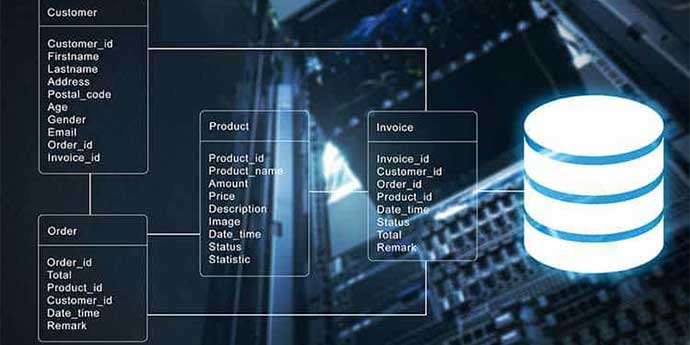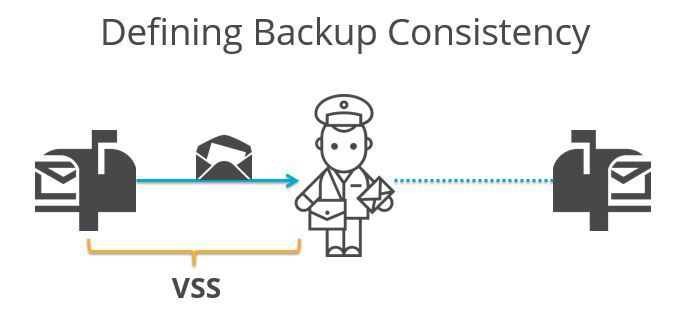Share this
Protecting SQL Based Applications
by Sean Curiel on Sep 17, 2015 12:51:08 PM
Whether it’s construction, manufacturing, law offices, or healthcare – these markets all use some type of Customer Relationship (CRM) , Enterprise Resource Planning (ERP), Accounting and Inventory software. This means that there is critical data that must be protected, which is accessing some type of Database, often through the Microsoft SQL product line. Many clients may not even understand how the back-end side of this works, they simply want to know that their data is securely protected without a whole lot of administration or intervention required.
Examples of these types of products include; Sage, vTiger, Casengo, Microsoft Dynamics, SAP, PeopleSoft and Seibel.
 Are your SQL databases protected?
Are your SQL databases protected?One question that often comes up is – what is the best way to protect these SQL databases? Will performing a “full-file backup” of a production database capture all of our data, or will it leave us struggling when it comes time to restore? In virtual environments, where should my backup software be installed?
To be sure, there are different ways to approach these scenarios. To start with, we need to have a better understanding of Volume Shadow Copy Services (VSS), and the various levels of backup consistency.
What is Microsoft’s VSS? (Volume Shadow Copy Service):
VSS is a mechanism for creating consistent point-in-time copies of data known as shadow copies. It helps to create consistent backups of open files and applications.
Think of your functioning SQL Database as a post office, and the mailman as your memory accessing data between multiple locations.
Simply performing a file copy of a production database, for example, will mean that you aren’t getting the full picture of your data. Imagine a file changing before the copy is complete, and not capturing those pending items in memory – resulting in an Inconsistent Backup.
However, if your backup solution utilizes the system wide VSS component, your backup will attempt to grab the data which is in memory. One good example of this is NovaBACKUP Server which will utilize Windows VSS to backup open files. Think of it as if you performed a backup while your system was in Hibernate mode. This is far superior to backing up without VSS, as all data is captured at the same time, resulting in a Crash-Consistent Backup. But depending on the complexity of the applications there is still the potential to lose data in memory.
Finally, when dealing with business applications such as Microsoft SQL, the manufacturer will often write their own application-specific VSS writer which is integrated deep within the core of the application. This application-specific type of VSS is usually realized in a backup solution as a plugin, for example NovaBACKUP Business Essentials contains plugins for both Microsoft Exchange and Microsoft SQL. The result in this case will be an Application-Consistent Backup, offering the optimal level of backup with all data captured at the same time, and the memory contents are saved to a file. This type of backup is comparable to backing up an application after it has been properly shut down.
So coming back to one of our original questions regarding how to best protect a virtual environment running Microsoft SQL; NovaStor recommends installing a single copy of NovaBACKUP Business Essentials on the Hypervisor system itself, the system that is hosting the virtual machine, offering the ability to quickly take snapshots of your virtual machines as needed. Additionally we recommend installing a single copy of Business Essentials on the virtual machine which is running the Microsoft SQL application. This will take full advantage of the application specific VSS writer / SQL plugin within our backup solution and offer the most complete level of protection.
A rather simple answer, with something of a complex explanation.
For more information, check out our recorded webinar on the SQL based applications and how to protect your databases:
Share this
- Pre-Sales Questions (109)
- Tips and Tricks (96)
- Industry News (58)
- Reseller / MSP (37)
- Best Practices (31)
- Security Threats / Ransomware (29)
- Applications (26)
- Disaster Recovery (26)
- Cloud Backup (24)
- Compliance / HIPAA (24)
- Backup Videos (23)
- Storage Technology (23)
- Virtual Environments (17)
- Infographics (8)
- Technology Updates / Releases (8)
- Backup preparation (5)
- Products (US) (3)
- Company (US) (1)
- Events (1)
- Events (US) (1)
- January 2025 (1)
- December 2024 (1)
- November 2024 (1)
- October 2024 (1)
- September 2024 (2)
- August 2024 (1)
- July 2024 (2)
- June 2024 (2)
- May 2024 (1)
- April 2024 (1)
- March 2024 (2)
- February 2024 (2)
- January 2024 (1)
- December 2023 (1)
- November 2023 (1)
- October 2023 (1)
- September 2023 (1)
- August 2023 (1)
- July 2023 (1)
- May 2023 (1)
- March 2023 (3)
- February 2023 (2)
- January 2023 (3)
- December 2022 (1)
- November 2022 (2)
- October 2022 (2)
- September 2022 (2)
- August 2022 (2)
- July 2022 (1)
- June 2022 (1)
- April 2022 (1)
- March 2022 (2)
- February 2022 (1)
- January 2022 (1)
- December 2021 (1)
- November 2021 (1)
- September 2021 (1)
- August 2021 (1)
- July 2021 (1)
- June 2021 (1)
- May 2021 (2)
- April 2021 (1)
- March 2021 (2)
- February 2021 (1)
- January 2021 (1)
- December 2020 (1)
- November 2020 (1)
- October 2020 (2)
- September 2020 (4)
- August 2020 (2)
- July 2020 (1)
- June 2020 (1)
- May 2020 (1)
- April 2020 (1)
- March 2020 (3)
- February 2020 (2)
- January 2020 (2)
- December 2019 (1)
- November 2019 (1)
- October 2019 (1)
- August 2019 (1)
- July 2019 (1)
- June 2019 (1)
- April 2019 (1)
- February 2019 (1)
- January 2019 (1)
- December 2018 (1)
- November 2018 (2)
- August 2018 (3)
- July 2018 (4)
- June 2018 (2)
- April 2018 (2)
- March 2018 (2)
- February 2018 (2)
- January 2018 (3)
- December 2017 (1)
- September 2017 (1)
- May 2017 (2)
- April 2017 (5)
- March 2017 (4)
- February 2017 (1)
- January 2017 (1)
- December 2016 (1)
- November 2016 (1)
- October 2016 (2)
- September 2016 (1)
- August 2016 (3)
- July 2016 (2)
- June 2016 (2)
- May 2016 (7)
- April 2016 (8)
- March 2016 (1)
- February 2016 (3)
- January 2016 (12)
- December 2015 (7)
- November 2015 (5)
- October 2015 (6)
- September 2015 (2)
- August 2015 (3)
- July 2015 (2)
- June 2015 (2)
- May 2015 (1)
- April 2015 (4)
- March 2015 (3)
- February 2015 (4)
- January 2015 (2)
- October 2014 (4)
- September 2014 (8)
- August 2014 (5)
- July 2014 (7)
- June 2014 (3)
- May 2014 (3)
- April 2014 (9)
- March 2014 (7)
- February 2014 (7)
- January 2014 (5)
- December 2013 (4)
- October 2013 (7)
- September 2013 (2)


